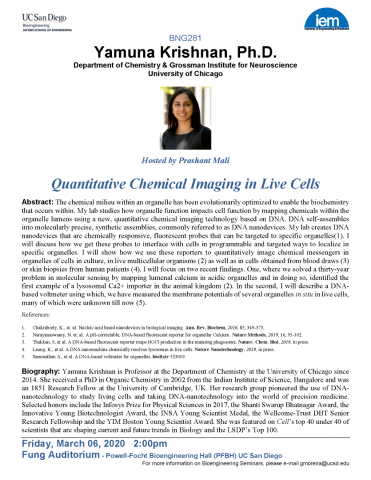Geert W. Schmid-Schoenbein, Ph.D.
Chair of Bioengineering
University of California, San Diego
Seminar Information

How is it possible that one can eat and digest an intestine but not digest one’s own intestine?
This question raises a fundamental issue that could be a key to understand many diseases and death.
During every meal the pancreas releases a set of concentrated digestive enzymes into the small intestine which degrade biopolymers of diverse sources as part of normal digestion. An important mechanism that prevents autodigestion of one’s own intestine is containment of digestive enzymes in the lumen of the small intestine by the mucosal epithelial barrier. This barrier blocks entry of the pancreatic enzymes from the lumen into the wall of the small intestine to assure one digests food and not one’s own tissue. An increasing body of evidence suggests, however, that this protection mechanism against autodigestion may fail and lead to diseases and situations associated with organ failure and death.
The digestive enzymes are synthesized in the pancreas and transported in the small intestine as part of normal digestion. They are concentrated and in an active form when they mix with food in the small intestine. In a normal intestine the mucosal epithelial barrier blocks entry of digestive enzymes into the wall of the intestine. But in several experimental forms of shock or after exposure to a high fat diet the permeability of the mucosal barrier increases and allows entry of digestive enzymes into the wall of the intestine starting autodigestion. Digestive enzymes as well as cytotoxic fragments they generate during tissue degradation escape into the systemic circulation. They can activate a cascade of other degrading proteases, for example members of the matrix metalloproteinases (MMPs), and cause diverse cell and microvascular dysfunctions. For example, defective mechanotransduction in leukocytes is caused by ectodomain cleavage of the FPR receptor (a mechanosensor) or insulin resistance by cleavage of the ectodomain of the insulin receptor. In shock or sepsis blockade of digestive enzymes serves to attenuate the autodigestion and associated organ dysfunction and mortality. A similar protection of organ function is observed in models of metabolic syndrome after chronic blockade of systemic MMP activity. Our results point towards the digestive enzymes, and breakdown products they generate, as major mediators for metabolic disease and organ failure in experimental models of shock.
Dr. Geert W. Schmid-Schoenbein is Distinguished Professor and Chairman of the Department of Bioengineering at UCSD. He received his Ph.D. in Bioengineering at UCSD. Following a Post-doctoral Fellowship at Columbia University, New York, he joined the faculty of the Department of Bioengineering at UCSD in 1979 where he served ever since. His team pioneered the role of inflammatory mechanisms in heart disease, stroke, diabetic retinopathy and other diseases. The team uncovered a fundamental mechanism for cell and organ dysfunctions due to “Autodigestion”. He is former President of the Biomedical Engineering Society, the Microcirculatory Society and the North American Society of Biorheology and is Past Chair of the US National Committee on Biomechanics and Past Chair of the World Council for Biomechanics. He is Member of the US National Academy of Engineering was elected for several years as Teacher of the Year in Bioengineering.
